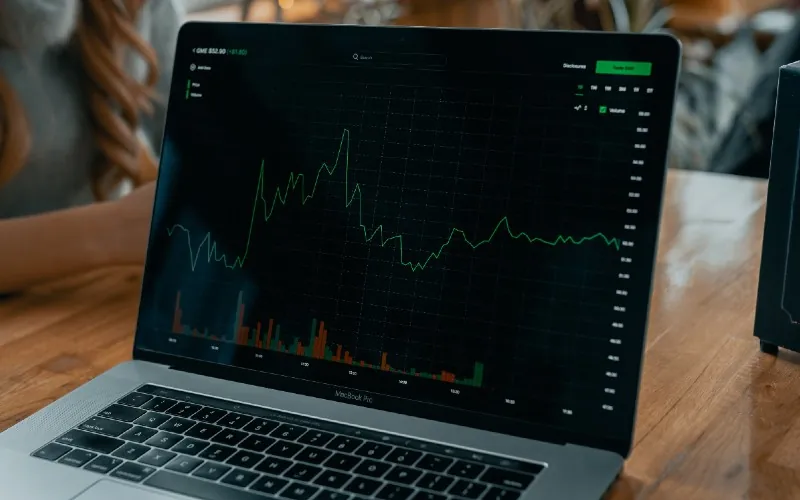Cryptocurrency returns are immune to spillovers caused by changing international monetary policies, according to new research from Durham University Business School.
The researchers state that cryptocurrencies may offer diversification benefits as a digital asset.
The study also found that interconnectedness between cryptocurrency returns and monetary policy spillovers were particularly large when shadow policy rates became negative, moderated during the Fed’s ‘tapering process’, and sharpened again more recently as cryptocurrency buoyancy returned.
This research was conducted by Dr Ahmed Elsayed, Professor in Economics and Finance at Durham University Business School, alongside his colleague, Ricardo Sousa, a Professor at the University of Minho, Braga.
The researchers were interested in understanding the dynamic and spillover effects of leading countries’ international monetary policies on the cryptocurrency market, and whether or not they were affected in the same way as traditional financial assets.
To do so, the researchers used daily data on shadow policy rates – which are indicators of monetary policy actions – for four major economies: the Eurozone, Japan, the UK and the US. The researchers then used daily closing price data on three key cryptocurrencies; Bitcoin, Litecoin and Ripple, to determine whether these monetary policy changes had an impact on cryptocurrency returns.
Their investigations revealed strong interconnectedness between cryptocurrencies, with returns correlating as both high and positive for all cryptocurrencies reviewed.
The researchers also found that shadow short-rates and cryptocurrency returns typically have a low correlation, which tends to be negative, suggesting that monetary policy tightening has a negative effect on cryptocurrency returns. In a low interest rate environment, investors tend to ‘search-for-yield’ which again reinforces the view of some diversification gains provided by cryptocurrencies in addition to portfolios consisting of alternative and conventional assets.
“In the aftermath of the global financial crisis, central banks in both developed countries and emerging market economies have deployed a series of unconventional monetary policies,” said Professor Elsayed.
“Not surprisingly, international monetary policy spillovers became particularly relevant, posing challenges for policymakers. However, our research suggests cryptocurrencies are a less volatile asset when it comes to these spillovers.”
This research supports the view of a somewhat low monetary policy synchronisation in recent years, as economic growth geared at different speeds across jurisdictions. Thus, the US is generally a net transmitter of shocks, while the Eurozone and the UK are both net transmitters and receivers.
As for cryptocurrencies, Bitcoin and Litecoin are net transmitters of shocks, while Ripple is a net receiver.
These findings of strong international monetary spillovers pose challenges for national authorities, reinforcing the importance of policy coordination.
The researchers suggest setting up a global level playing field to avoid regulatory arbitrage and deter any potential financial instability that might be attributed to sharp shifts in capital flows associated with portfolio reallocations into and away from the cryptocurrency space.
Smart contract security firm Certora raises $36m
Smart contract security firm Certora has raised $36 million in Series B funding.
Based in Israel, Certora enables smart contract developers to detect bugs in their code before launching.
It is used by decentralised finance protocols including Aave, Balancer, Compound Finance, MakerDao and Sushi.
The round was led by Jump Crypto and featured participation from Tiger Global, Galaxy Digital and existing investors including Electric Capital, ACapital, Framework Ventures, Coinfund, Lemniscap, Coinbase and VMware.
Certora claims to currently secure about $50 billion in DeFi projects through technology developed over two decades of academic research. The company, which employs 65 people, including lecturers from leading American universities, is led by Shmuel Sagiv, computer science chair at Tel Aviv University.
Saurabh Sharma, partner and head of investments at Jump Crypto, said: “Powered by world-class experts, Certora leverages formal verification to employ a suite of scalable and robust products that offer much higher reusability and granular testing.”
Cryptocurrency shorts
Spotify is testing the inclusion of non-fungible tokens on the platform, with a select few artists in the US allowed to promote their NFTs on their profile pages.
The NFT market is experiencing a sharp decline in prices and sell volume, with floor prices dropping nearly 25% in the last seven days.
Blockchain investment firm Fortis Digital Ventures is raising $100 million for a digital asset fund focused on altcoins to ‘bridge the gap between traditional and DeFi’.
Cloudflare, a cyber giant which secures websites, is set to launch and fully stake Ethereum validator nodes over the next few months. It will study energy efficiency, consistency management and network speed following the blockchain’s highly anticipated switch to a proof-of-stake network. Cloudflare says the move is part of its commitment to environmental sustainability and to help “build a better internet”.
Birgit Rodolphe, executive director at German financial regulator BaFin, wants uniform regulation of the DeFi space throughout the European Union.
Linktree, the link-in-bio category leader, has announced a new set of NFT features developed in partnership with marketplace OpenSea: NFT Gallery Link; Profile Image and Background; and NFT Lock, where NFT creators can lock their links using a smart contract address, with only visitors who own NFTs from a particular collection able to unlock the link.
Crypto prices
The overall market cap of the more than 19,400 coins is at $1.29 trillion at the time of writing (7am UK), a 1.3% decrease in the last 24 hours.
Market leader Bitcoin – the original cryptocurrency created by the mysterious Satoshi Nakamoto – dropped 1% to fall below $30,000. BTC is down 5% in a week.
Ethereum, the second most valuable crypto coin – created as a decentralised network for smart contracts on the blockchain – lost 2% to around $2,040. ETH is 14% down over the course of a week.
Binance Coin is a cryptocurrency created by popular crypto exchange Binance to assist its aim in becoming the infrastructure services provider for the entire blockchain ecosystem. Its BNB token fell 2% to below $300, leaving it 5% down over seven days.
The XRP token of Ripple, a payment settlement asset exchange and remittance system, acts as a bridge for transfers between other currencies. XRP lost 2% to fall below 43 cents, which leaves it 17% down over seven days.
Cardano is an open source network facilitating dApps which considers itself to be an updated version of Ethereum. Its ADA token, designed to allow owners to participate in the operation of the network, shed 2% to 56.5 cents. It is 10% down over the course of a week.
Solana is a blockchain built to make decentralised finance accessible on a larger scale – and capable of processing 50,000 transactions per second. Its SOL token fell 2% to $55.69 and is down 17% compared with a week ago.
Meme coin DOGE was created as a satire on the hype surrounding cryptocurrencies but is now a major player in the space. DOGE shed 1% to drop below 9c, leaving it 18% down in a week.
Polkadot was founded by the Swiss-based Web3 Foundation as an open-source project to develop a decentralised web. Its DOT token, which aims to securely connect blockchains, fell 5% to below $11 and is 5% lower than its price a week ago.
Avalanche is a lightning-quick verifiable platform for institutions, enterprises and governments. Its AVAX token dropped 2% to $33.73 and is 19% down in a week.
To see how the valuations of the main coins have changed in recent times – and for round-ups of recent cryptocurrency news developments – click here.
For valuations of the top 100 coins by market cap in US dollars, plus 24-hour price change, see below.


